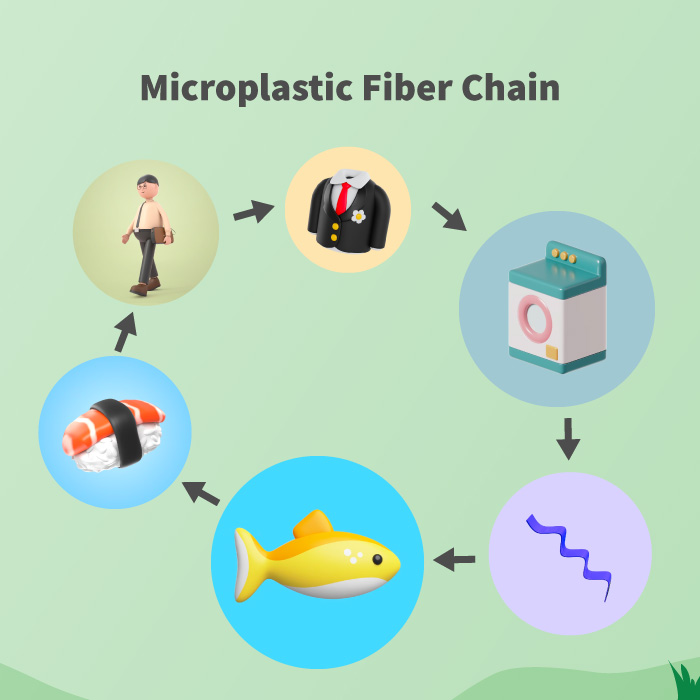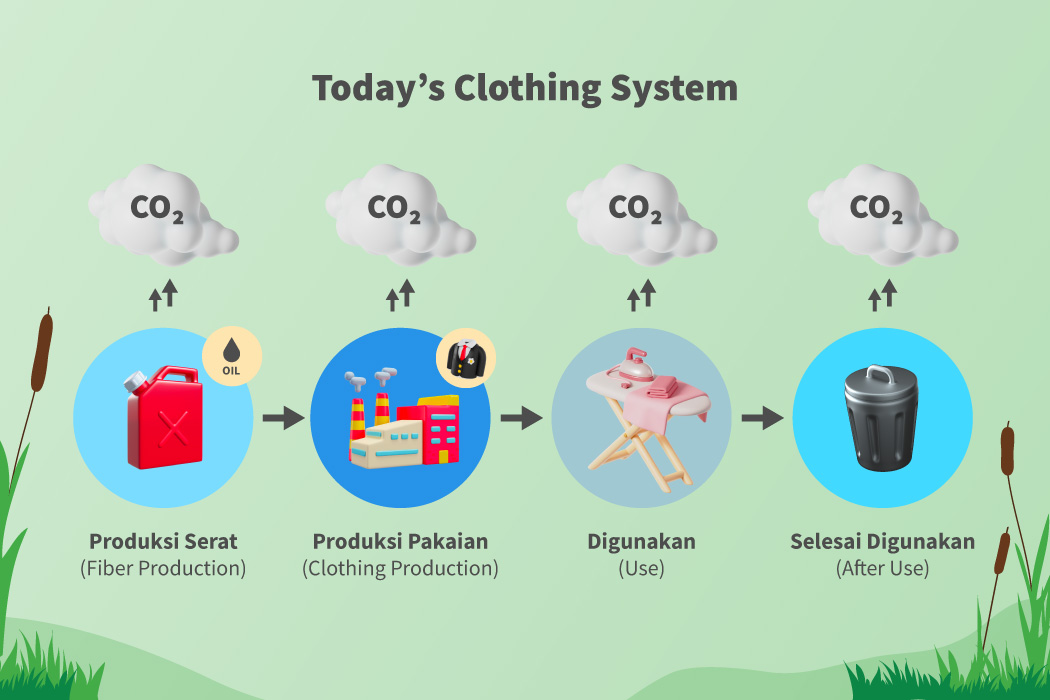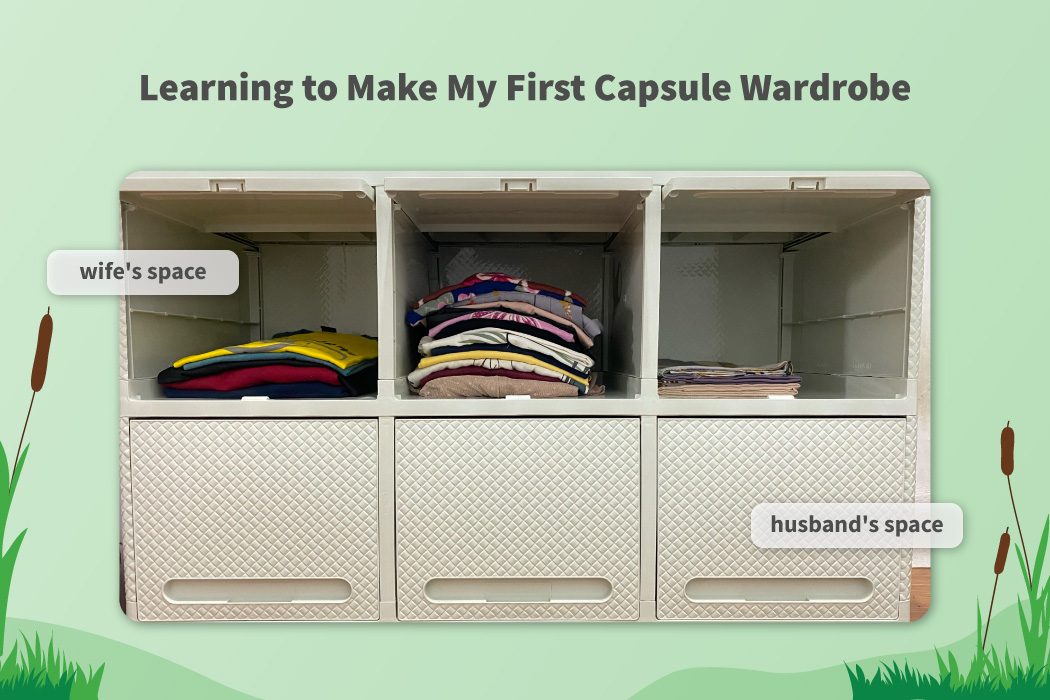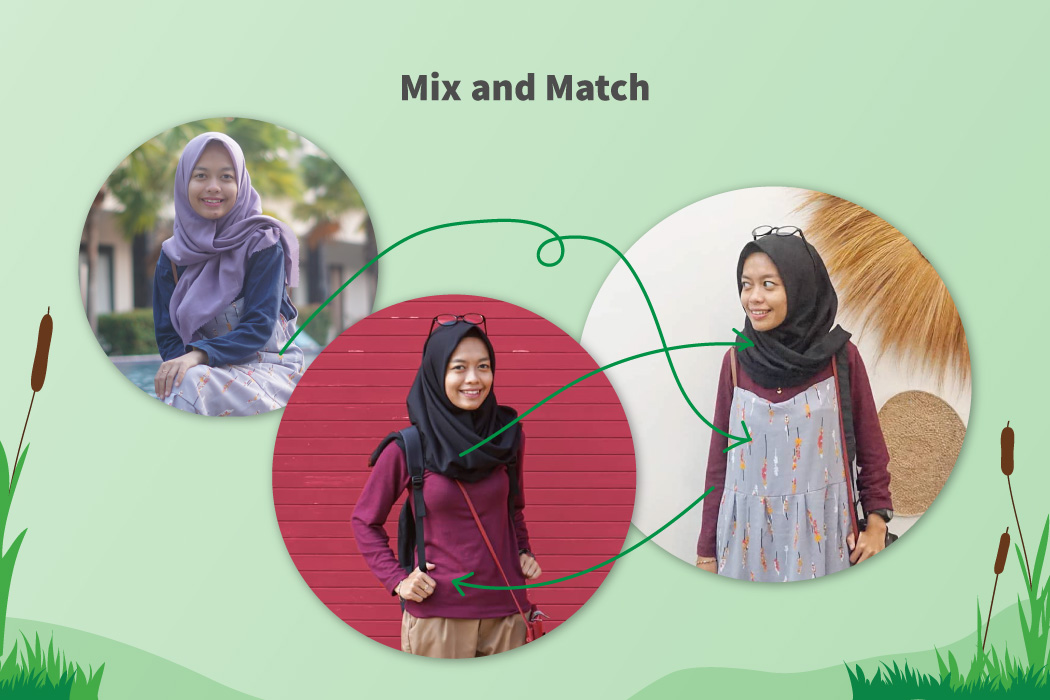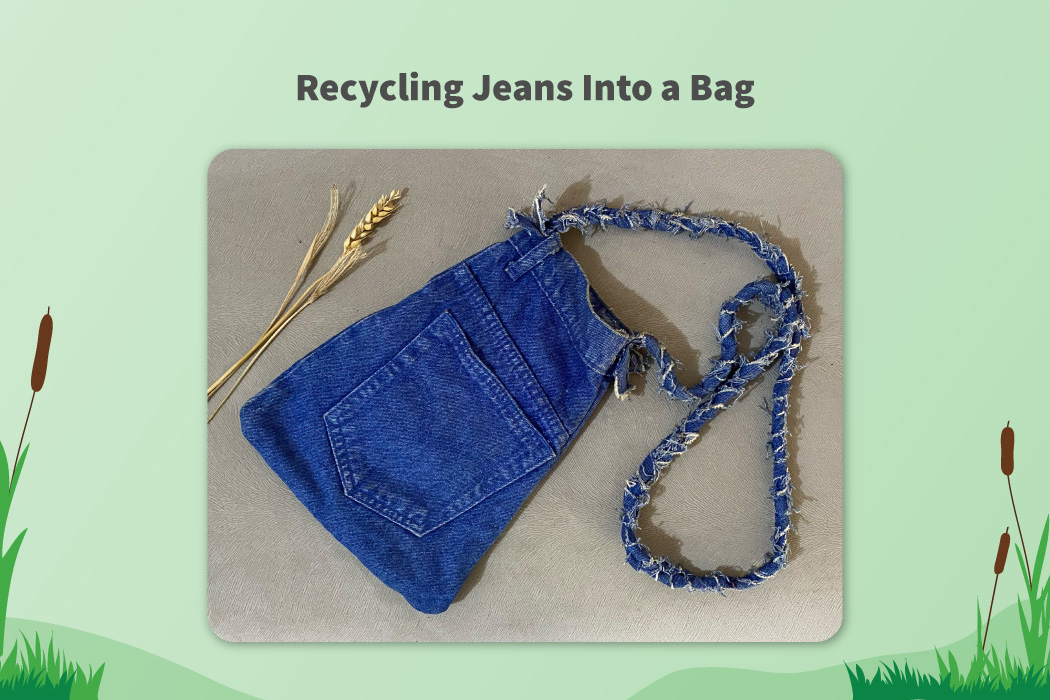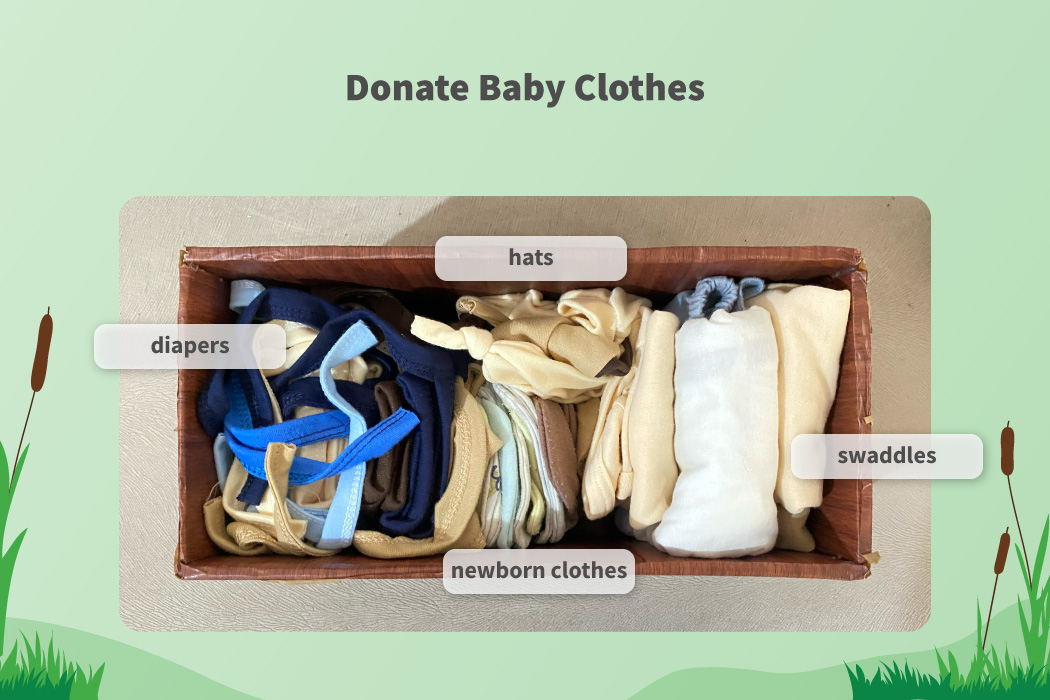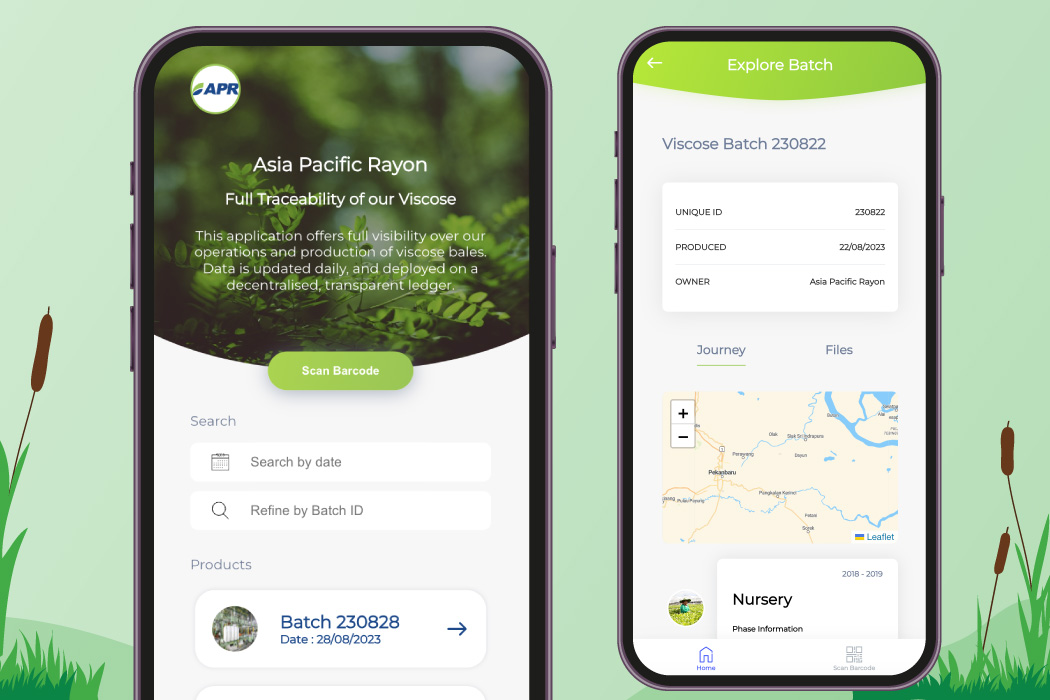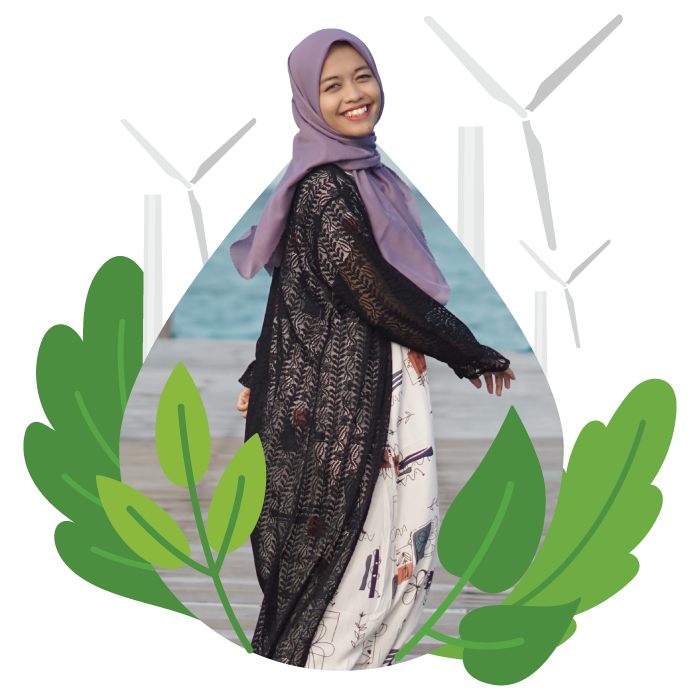
"Caring for the Earth Through Eco-Friendly Style"
by Ella Fitria | 31 Agustus 2023
Select the language:
Amira Ben Abbes, Influencer capsule wardrobe
After lunch, as usual I took advantage of the rest of the break to view various trending information on social media platforms. Slowly, I swap my smartphone screen while looking for interesting and inspiring videos or content.
Until finally, my eyes and fingers together stopped at one of the influencers who was mixing and matching her dress with just a few clothes that he owned. Honestly, so far I have never encountered or found anyone who really applies this capsule wardrobe concept.
Capsule wardrobe is a minimalist lifestyle with limited clothing choices. Seeing the influencer’s video made me realize, especially in terms of sustainable fashion. So, in this article, I will share a few stories about the negatif impacts of the world of fashion on the earth.
I will also share tips that we can do to stay fashionable without destroying the earth. I’m sure, if we do the tips below together consistently, it will have a real positive impact. Before that, let’s take a look and think about the damage and negative impacts caused by fashion.
The damage of the earth is a serious problem that we are facing, right? For example, air pollution, waste that pollutes the soil, and waste that pollutes waters which have an impact on the stability of the ecosystem of living things on earth. The worse, this impact will have a big influence on climate change.
In fact, there are many factors that trigger environmental damage, especially if the spread is quite complex and occurs on a massive scale. One of the things we often forget is the damage to the earth caused by the fashion industry, including people’s behavior in responding to fashion trends.
Indeed, the beauty and charm of the fashion world can inspire and bring happiness to many people. However, the charm of fashion also contributes to environmental damage if we do not use it wisely. Are you curious about the damage to the earth that can occur as a result of the fashion industry? Let’s read this article to the end!
Exploitation of Energy and Natural Resources
My friends, did you know that most of the fashion or textile industry is very dependent on non-renewable natural resources? In fact, the amount is fantastic, up to 98 million tons per year. These natural resources include oil to produce synthetic fibers, inorganic fertilizers, and other chemicals used for coloring and finishing processes.
Apart from non-renewable natural resources, textile production also uses around 93 billion cubic meters of water per year. The large use of large resources will also have an impact on a new problem, that is water scarcity. I was surprised when I found data from the World Wildlife Fund (WWF), just because to make one cotton shirt requires around 2,700 liters of water. This amount of water is equivalent to the water one person drinks in 2.5 years. It’s a shame, isn’t it?
Excessive use of natural resources will damage the balance of the ecosystem. If the ecosystem is damaged, this will affect air quality, water availability, and even global warming.
Water Pollution by Chemical Waste
The textile industry also contributes greatly to water pollution by chemical waste used during the production process. The reason is, there are many textile industries that discharge water containing dangerous chemicals into the environment. According to data from the Ellen MacArthur Foundation, 20% of water pollution caused by industry comes from dyeing waste and textile chemicals. These chemicals can harm the surrounding environment, agriculture, and even factory workers themselves.
Moreover, in recent years, the textile industry is believed to be one of the contributors to plastic pollution in the sea. Guess, what the relation of textile industry with plastic pollution in the sea? In fact, the textile industry is not focused on plastic production, right? Well, it turns out that some of these textile products are made from plastic, you know. There are materials, such as polyester, nylon, or acrylic that are the cause.
During the production process, some micro-plastic fibers are released and end up in the sea. It is estimated that around half a million tons of micro-plastic fibers contribute to water pollution every year. If this continues, it is estimated that a total of 22 million tons of micro-plastic fibers will enter the sea from 2015 to 2050.
I can’t imagine what the condition of the sea would be like if that happened. The reason is, this micro-plastic waste can threaten marine habitat and biota. Even worse, micro-plastic fibers can also enter the human body through the seafood consumed. Terrifying, isn’t it?
Air Pollution by Gas Emissions
Apart from water pollution, the fashion sector also influences air pollution. In 2015, greenhouse gas emissions from the textile industry reached 1.2 billion tons. This air pollution is relatively large, considering that the amount is even greater than the combined emission gases from all international flights and sea shipping.
In addition, according to the World Resource Institute, polyester production produces 706 billion kg of greenhouse gases. These gas emissions are equivalent to operating 185 coal-fired power plants every year.
Air pollution by emission of greenhouse gases (CO₂) can certainly trigger global warming. If this continues, it will have an impact on more intense extreme climate change. For example, heat waves, droughts, and stronger and more frequent storms occur.
This is what makes me very interested in continuing to learn how to dress wisely. Because, the clothes we use can have a more “expensive” impact than the money we spend when buying them.
Soil Pollution by Solid Waste
Not only that, poor fashion waste management can also pollute the land. According to data from the Ellen MacArthur Foundation, 87% of clothing materials end up in landfills or incineration after use. Poor waste management and recycling systems mean that this textile waste cannot be utilized properly.
Textile waste that ends up in landfills can cause various negative impacts on the environment. This is because textile waste made from plastic fibers will not decompose for several decades. Even worse, products made from polyester can even decompose for up to 200 years. In fact, 60% of clothing production today is made from synthetic plastic materials such as nylon, polyester and acrylic.
Friends, let’s think about it together, guess how many natural resources requires of one shirt that we are currently wearing? Oil, water and other natural resources should not be exploited just for fun. Not to mention the environmental impact triggered by various fashion industry wastes.
Therefore, now is the time for me, you, all of us to be aware of what we choose. The trend term is conscious consumption. That way, when we buy something we don’t just pay attention to its economic value and function. However, we must also consider the possible impacts.


In addition to applying the concept of conscious consumption, we also need to recognize sustainable fashion to minimize the impact of the fashion industry on ecosystem stability. I’m sure, most of you are familiar with the term sustainable fashion, right?
So, sustainable fashion is a movement that demands the textile industry to prioritize the environment and socially by reducing negative impacts. The goal is to create environmentally friendly clothing, including to reduce pollution and excessive use of natural resources.
Sustainable Fashion Criteria
When we decide to implement the concept of sustainable fashion, there are several criteria that must be considered. This means that there are standards that determine whether the clothing or textile industry truly contributes to environmental and social sustainability.
This includes the use of sustainable materials, environmentally friendly production processes, and long-term positive impacts. In the following, there are three main criteria for sustainable fashion which can be one of the efforts to overcome the negative impacts of the textile and fashion industry.


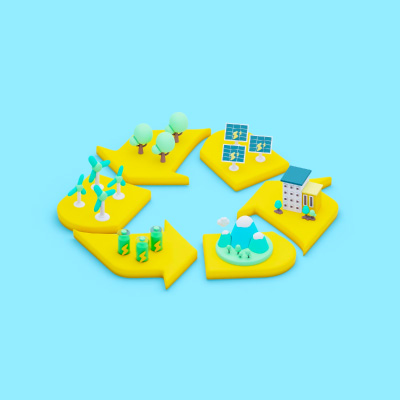
Know the Positive Benefits of Sustainable Fashion
If implemented well, sustainable fashion has several benefits that have a positive impact, both on the environment and society. Hopefully some of the benefits below can soften our hearts as well as fuel our enthusiasm to implement sustainable fashion in everyday life.

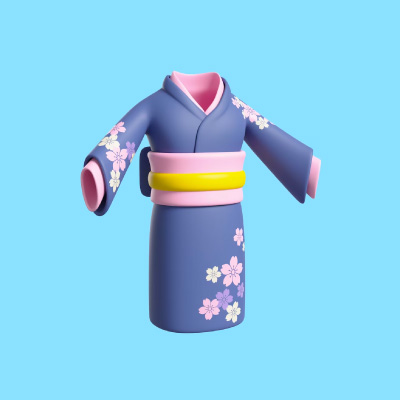


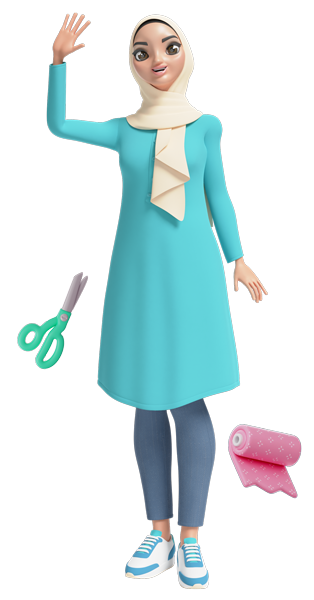

Honestly, I’m not entirely wise in using clothes. However, I learned from the various impacts of the fashion industry that can damage the earth. In my opinion, this can be overcome by collaborating with the textile industry and public awareness to implement sustainable fashion. Here are some simple things we can do to look stylish without damaging the environment and ecosystem stability.
Have Enough Clothes, Use It Longer
Getting older makes me more aware of needs and wants, including clothing. I prefer to buy clothes that can last a long time, meaning I prioritize quality. Also, when it’s time to buy clothes, I really consider various aspects, from clothes made from natural fabrics to styles that I really need and like.
This could be one solution to minimize clothes that end up being thrown away or unused. I also limit myself, my husband and my children from buying clothes according to their needs. By using clothes longer, we can reduce the fast cycle of fashion while reducing excessive consumption.
Mix and Match Clothes to Stay Fashionable
I am very happy when I see various content that presents mix and match clothing styles. The reason is, I’m learning to look stylish and look trendy without buying or adding to my clothing collection. The hope is that if I combine the various clothes I have, I will get a different and fresh look. That way, I don’t need to buy new clothes to look fashionable.
Fix and Reuse Slightly Damaged Clothing
Who here likes to DIY lightly damaged clothing? Ever since I was in high school, I have had an interest in trying out various DIY light damaged clothes. For example, my long skirt, which has a hole at the bottom due to the exhaust from the motorbike, I cut it to my knees so it can be mixed and matched with leggings. As a result, you can look stylish without wasting money by modifying a skirt with holes.
Recycle and Get Creative with Garbage Waste
In fact, if we want to be creative, there are lots of unused clothes that can be turned into useful items. I once made a mini bag from jeans that had holes in the knees due to an accident. So, I took the top part of the jeans that was still intact, then I sewed them manually by hand. For the straps, I used jeans at the knees, then divided them into three lengthwise sections and braided them. Simple but looks unique, right? This can be a way to recycle and reduce clothing disposal.
Donate Unused Clothes
The next tip that can be done to minimize the pile of clothes is to donate unused clothes. However, you should use clothes until they really can’t be used anymore, okay! So, if you have babies like me, I choose to donate baby clothes that are still good and usable for relatives or people in need. Some of my son’s baby clothes are also passed down from generation to generation. Besides being able to help other people, I can also reduce waste and make my wardrobe tidier.
Choose Clothing that is Made ECO Friendly
After I found out how many natural resources go into making one piece of clothing, it started to hit me. Even if I need new clothes, I will choose clothes that are produced using environmentally friendly materials and production processes. For example, natural fiber-based fabrics such as viscose rayon are processed from trees with sustainable management by Asia Pacific Rayon (APR) and Sateri. Both companies are managed by Royal Golden Eagle (RGE) which implements a sustainable production system.


Royal Golden Eagle (RGE) manages international companies engaged in natural resource-based manufacturing products that are beneficial to everyday life. For example, pulp and paper, palm oil, special cellulose, viscose fiber, to the development of energy resources.
Interestingly, RGE takes sustainability and social responsibilities through various initiatives to ensure responsible resource management and have a positive impact on local communities.
It is noted that RGE employs more than 60,000 workers and has operations in various Asian countries, such as Indonesia, China, Brazil, Spain and Canada. Furthermore, RGE also continues to spread its wings to involve new markets and communities.
Royal Golden Eagle (RGE) 5C Business Philosophy
RGE has a goal to improve the quality of life through sustainable resource development. Therefore, RGE adheres to the 5C business philosophy which is applied in every company operation. The hope of this philosophy, RGE can improve quality in all aspects of life.
Good for Community Country Climate Customer Company


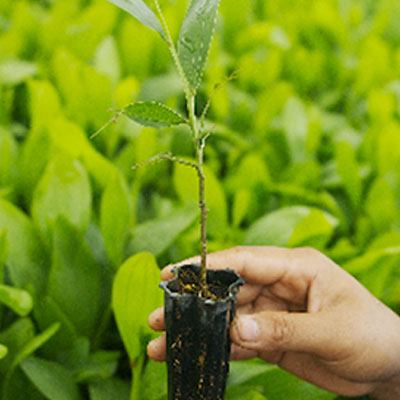


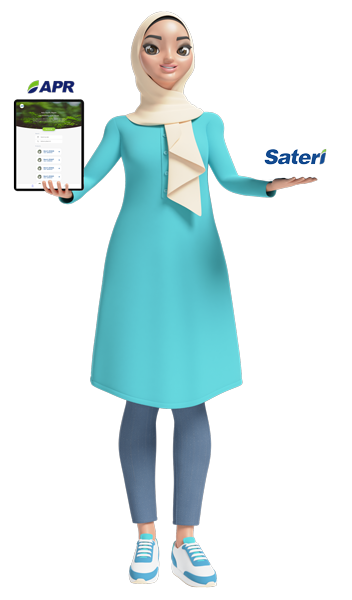

So, after we know the negative impact of the textile industry on the environment, now is the time to see how companies from the RGE Group create innovations to overcome these problems. Below are several RGE innovations in the textile industry from Sateri and APR. Actually, there are many other innovations and breakthroughs from RGE in sustainability, but I will discuss innovations related to the world of fashion such as FINEX and Follow our Fiber.
FINEX: Next-Generation Recycling Innovation with Sateri
Sateri is one of the largest producers of viscose rayon. Friends, did you know that viscose rayon is a natural fiber made from trees grown on sustainably managed plantations? Well, this natural fiber can decompose itself (biodegradable) because it is environmentally friendly. Therefore, viscose rayon has become a popular choice for clothing, household materials, and various hygiene products.
One of Sateri’s innovations made from natural fibers is FINEX. FINEX (stand for “Fibre Next”) is the latest generation of natural fiber containing recycled materials. In its manufacture, FINEX uses natural fibers derived from a mixture of textile waste and recycled materials.
By using products made from FINEX, we can at least contribute to sustainability. Oh yes, don’t worry, even though they come from recycled materials, products made from FINEX are also comfortable to wear. Because the material is soft, friendly to the skin, and doesn’t make it hot. In addition, the resulting color also looks bright. Therefore, we can still protect the earth by staying stylish, right?
Follow our Fiber: Resource Transparency with APR
As consumers who care about the environment, we must know where our products come from, right? Does it come from a renewable source? Is it managed responsibly? And other questions that often make us curious.
Interestingly, Asia Pacific Rayon (APR) launched the Follow our Fiber innovation. Follow our Fiber is a blockchain-based application for tracking the sourcing of fiber materials throughout the supply chain. Furthermore, we as customers can track the product’s journey from the production stage to the source of fiber cultivation to find out its origin.
Through blockchain technology, production data starting from planting location, date, delivery is recorded in real time. This data can be accessed publicly and cannot be changed by anyone so as to guarantee data validity and transparency. Customers or stakeholders only need to scan the barcode using the application to see all production data. That way, all our questions and concerns about the origins of the products we use have been answered.


Remember, style doesn't need to destroy the world, but we can meet to give meaning to each other.
Ella Fitria
RGE acts as a supplier of environmentally friendly textile materials which is a pioneer in various companies that focus on sustainability and a better future. Meanwhile, our job is to be a wise and responsible consumer. Indirectly, by choosing eco-friendly products, we also support fashion industry brands that care about the environment and society.
Hopefully this article can soften our hearts and awareness to take a role in encouraging positive change, especially in the world of fashion and sustainable living. We can start with a simple way as I have written above. If not us, who else will take care of the earth for a better future? Remember, style doesn’t need to destroy the world, but we can meet to give meaning to each other.
Sumber referensi:
-
Ellen MacArthur Foundation, A new textiles economy: Redesigning fashion’s future, (2017, http://www.ellenmacarthurfoundation.org/publications)
-
https://www.wri.org/insights/numbers-economic-social-and-environmental-impacts-fast-fashion
-
https://www.wri.org/insights/apparel-industrys-environmental-impact-6-graphics
-
https://www.aprayon.com/en/media-english/articles/what-is-sustainable-fashion/
-
https://www.aprayon.com/en/media-english/articles/why-viscose-fabric-is-the-future-of-the-fashion-industry/
-
https://www.rgei.com/id/keberlanjutan/kepedulian-sosial
-
https://www.rgei.com/id/keberlanjutan/kepedulian-pada-negara
-
https://www.rgei.com/id/keberlanjutan/perlindungan-iklim
-
https://www.rgei.com/id/tentang-kami/perusahaan-kami
- https://www.sateri.com/products/recycled-fibre-finex/
- https://www.followourfibre.com/
-
https://www.rgei.com/attachments/article/1250/20190515%20-%20Follow%20Our%20Fibre%20Press%20Release.pdf
- Personal photos and documentation
- Photos and documentation from RGE
- Graphic Design by Ella Fitria from source freepik
- Animation by Ella Fitria from source lottiefiles
- Icon Design from font awesome

